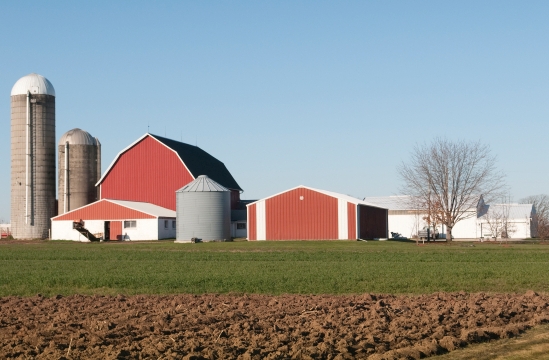 Website, events in Iowa, D.C., highlight effort to provide American farmers with security
Website, events in Iowa, D.C., highlight effort to provide American farmers with security
ARLINGTON, VA – The National Milk Producers Federation (NMPF) has joined forces with nearly 40 other farm and ranch organizations to raise public awareness of the need for Congress to pass a new, comprehensive, five-year farm bill before current farm programs expire in September.
The coalition, called Farm Bill Now, comprises associations and coalitions representing commodity crops, livestock, specialty and minor crops, energy and biobased product groups, farm cooperatives and financial groups, as well as the nation’s two largest farm groups, the American Farm Bureau Federation and the National Farmers Union.
“National Milk stands united with these other groups – each of which has strong and distinct policy priorities – yet all of whom are committed to passing a new, comprehensive bill this year,” said Jerry Kozak, President and CEO of NMPF. “Dairy farmers have been working for three years on developing a new and better safety net, and we need a new farm bill to bring that effort to fruition.”
In addition to Wednesday’s launch of the coalition, Farm Bill Now is launching an interactive web portal at www.FarmBillNow.com, through which visitors can connect to their members of Congress and show their support for a new five-year farm bill. Using messages to Congress via social media, event locations and times, and an online petition, FarmBillNow.com gives both farmers and consumers the resources they need to make their voices heard, telling Congress that the farm bill needs to be completed before the current farm food law expires in September.
Kozak said that the coalition effort will call attention to the fact that the farm bill is important to more Americans than just those working in agriculture.
“Calling the farm bill the ‘farm bill’ suggests its impact is limited only to farms and to the rural areas to which they are so closely tied. It’s really a jobs bill, a food bill, a conservation bill, a research bill, an energy bill, and a trade bill. In other words, it’s a bill that affects every American,” he said.
“The farm bill has a broad impact on our citizens and our economy. It provides healthy foods to millions of schoolchildren and nutritious options to families in need. It develops and expands trade with valuable foreign markets. By reducing spending significantly compared to prior farm bills, the proposals pending right now in Congress address the need to get our nation’s fiscal house in order,” Kozak said.
In the coming weeks, Farm Bill Now will hold events in Iowa, and on Capitol Hill, to underscore this message. On Tuesday afternoon, August 28, farmers representing multiple groups within the coalition will discuss the Farm Bill Now effort at the annual Farm Progress Show in Boone, Iowa, the nation’s largest outdoor farm show.
On Wednesday morning, September 12, the groups will gather on the grounds of the U.S. Capitol alongside members from the Senate and the U.S. House of Representatives, as well as leaders from other major farm and commodity groups, rural development, livestock, conservation, hunger, consumer and energy organizations to encourage Congress to pass the bill before programs expire at the end of the month.
Farm Bill Now is a coalition of 39 agricultural groups, each with strong and varied policy priorities, yet all committed to passing a farm bill this year. Learn more at www.FarmBillNow.com.
25x’25 Alliance
Agricultural Retailers Association
American Beekeepers Federation
American Farm Bureau Federation
American Feed Industry Association
American Pulse Association
American Seed Trade Association
American Sheep Industry Association
American Soybean Association
American Sugar Alliance
Biobased Products Coalition
Council of State Governments East
Council of State Governments Midwest
Farm Credit Council
National Association of Wheat Growers
National Barley Growers Association
National Cattlemen’s Beef Association
National Corn Growers Association
National Cotton Council
National Council of Farmer Cooperatives
National Farmers Union
National Milk Producers Federation
National Potato Council
National Sorghum Producers
National Sunflower Association
Northharvest Bean Growers Association
Northeast State Association for Agricultural Stewardship
Produce Marketing Association
Southern Peanut Farmers Federation
Specialty Crop Farm Bill Alliance
State Agriculture and Rural Leaders
United Dairymen of Arizona
United Fresh Produce Association
U.S. Canola Association
U.S. Dry Bean Council
USA Dry Pea and Lentil Council
USA Rice Federation
Western Growers Association
Western Peanut Growers Association
The National Milk Producers Federation (NMPF), based in Arlington, VA, develops and carries out policies that advance the well being of dairy producers and the cooperatives they own. The members of NMPF’s 30 cooperatives produce the majority of the U.S. milk supply, making NMPF the voice of more than 32,000 dairy producers on Capitol Hill and with government agencies.



 Website, events in Iowa, D.C., highlight effort to provide American farmers with security
Website, events in Iowa, D.C., highlight effort to provide American farmers with security






